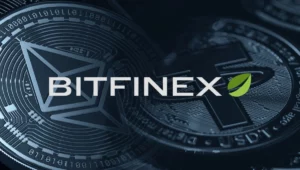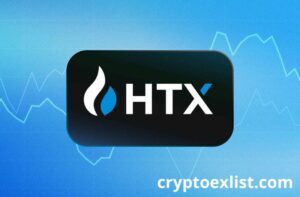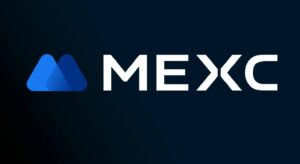
Ripple Labs is once again under the spotlight after crypto researcher “Darkhorse” claimed the company may be sidestepping a federal injunction through a newly unveiled $300 million XRP treasury structure involving Asia-based firm Webus International Ltd. The revelation has reignited debate within the crypto community over the legality and intent behind the move, and whether Ripple is creatively navigating legal barriers or actively bypassing them.

The Claim: A Legal Backdoor for XRP Sales?
On June 4, 2025, Darkhorse took to X (formerly Twitter) to argue that Ripple’s latest strategy represents a legally sound workaround. According to him, the structure allows Ripple to “bypass the injunction legally and cleanly.” He added, “It’s not just clever, it’s compliant by design.”
The strategy centers on a filing recently submitted by Webus through a Form 6-K, which disclosed the creation of an XRP Treasury. The fund will be managed by Samara Alpha, an SEC-registered investment adviser, with delegated control of up to $300 million in XRP under a regulated, phased model.
While the filing does not explicitly state the source of the XRP, Darkhorse claims the implication is clear: Ripple can sell XRP to Samara, who then allocates it to Webus, all without engaging in a direct securities transaction that would violate the standing injunction.
Context: Ripple’s Legal Limitations
Ripple is currently bound by a permanent injunction issued by Judge Analisa Torres in 2024, which prohibits the company from directly selling XRP to institutional investors without prior SEC registration. This ruling followed a multi-year legal battle between Ripple and the U.S. Securities and Exchange Commission (SEC).
With that in mind, Darkhorse suggests the workaround lies in indirect sales through regulated intermediaries. “Ripple is enjoined from direct institutional sales,” he wrote. “The workaround? Sell to regulated intermediaries (like Samara on behalf of Webus) with treasury agreements that are SEC-transparent and non-retail facing.”
However, not everyone agrees. Veteran XRP commentator Jay Nisbett rejected the notion that Ripple is circumventing legal boundaries. In a direct response, Nisbett argued that the move reflects “just adoption,” not evasion. He stated that Webus is simply acquiring XRP from the secondary market like any other participant and noted that XRP itself has not been classified as a security in the context of such acquisitions.
According to Nisbett, holding XRP on a company balance sheet does not constitute a securities transaction, nor does it signal Ripple’s involvement in any active selling.
The Rebuttal: Four Key Points from Darkhorse
In a detailed rebuttal, Darkhorse outlined four reasons why he believes the setup represents a deliberate, structured attempt to legally navigate the court’s restrictions:
- Webus’s 6-K Filing:
Unlike casual buyers, Webus filed a Form 6-K, a formal SEC disclosure document, to establish a $300 million XRP treasury. Management was handed over to Samara Alpha, creating an arms-length relationship under regulatory supervision. “This is not a retail buy on Coinbase,” Darkhorse emphasized. - Ripple’s Institutional Limitation:
The structure’s purpose, he argued, is to create regulatory distance. Ripple is not selling directly to investors but instead working through Samara, an SEC-facing intermediary, who takes custody and allocates XRP in a structured, compliant manner. - Webus-Ripple Connection:
Darkhorse pointed to Webus’s past involvement with RippleNet and pilot programs in Asia-Pacific to suggest a long-standing operational relationship. “Just because it wasn’t front-page news doesn’t mean it didn’t happen,” he noted. - Active Treasury Management:
He also dismissed the claim that Webus is passively holding XRP. “This is treasury deployment, not idle custody,” Darkhorse argued. Using an SEC-registered manager indicates that legal and institutional risk is being actively considered.
He concluded with a strong statement: “This isn’t Ripple dumping tokens on exchanges. It’s creating institutional conduits that comply while navigating around the injunction bottleneck.”
Ripple, the Courts, and the SEC: What Happens Next?
At present, the SEC has not commented on the new arrangement, and Ripple has not issued a public statement addressing the allegations. However, the timing is critical. The court recently denied Ripple’s request to vacate the 2024 injunction, calling the motion “procedurally improper.”
As a result, Ripple remains legally barred from selling XRP directly to institutional investors unless registered. Whether this new mechanism will attract further legal scrutiny is yet to be seen.
For now, the situation remains a gray area. While some see it as a clever workaround that respects the letter of the law, others view it as a potential test case for what counts as indirect securities distribution in the crypto era.
Despite the legal uncertainty, XRP has shown resilience. As of press time, the token was trading at $2.1989, reflecting ongoing interest from both retail and institutional players. Still, the controversy could inject fresh volatility into the market, particularly if the SEC chooses to revisit Ripple’s practices.

Conclusion: A Fork in the Road
The Webus-Samara XRP Treasury marks a new chapter in Ripple’s complex regulatory journey. Whether this will set a precedent for compliant token sales through intermediaries or invite another round of legal battles remains unclear. What is certain, however, is that the crypto industry continues to evolve around, and sometimes in spite of, regulatory constraints.
With billions of dollars in play and high-profile firms watching closely, the outcome of this strategy could shape how crypto companies structure institutional token offerings in the years to come.























